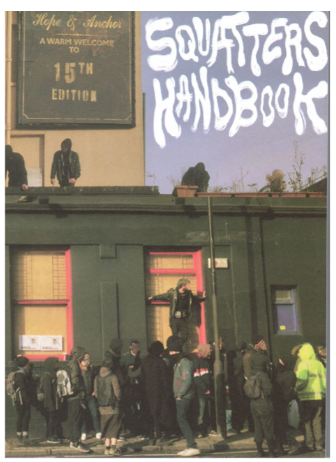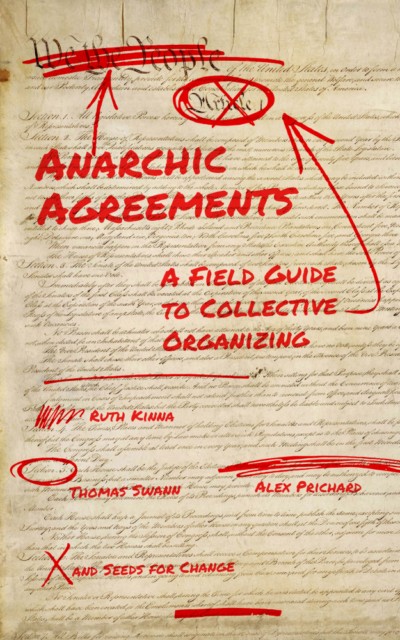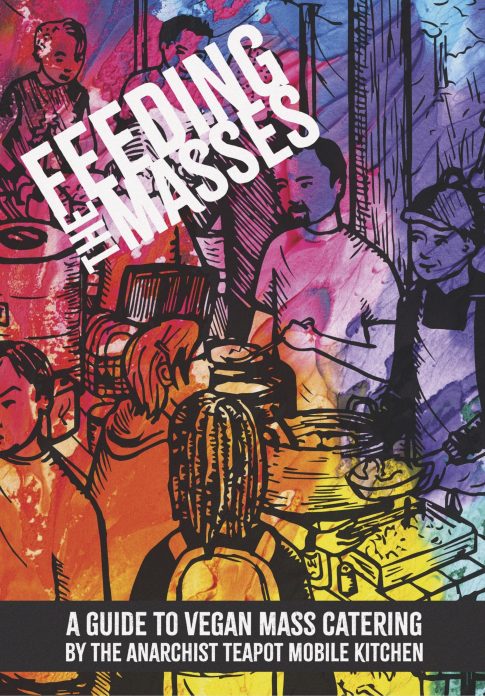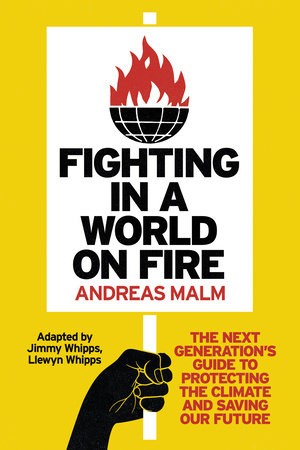Zapantera Negra
£10.00
Zapantera Negra: An Artistic Encounter Between Black Panthers and Zapatistas EDITED BY MARC JAMES LÉGER AND DAVID TOMAS WITH EMORY DOUGLAS, EDELO (MIA EVE ROLLOW AND CALEB DUARTE PIÑON), RIGO 23, AND SAÚL KAK
Description
What is the role of revolutionary art in times of distress? When Emory Douglas, former Minister of Culture of the Black Panther Party, accepted an invitation from the art collective EDELO and the Rigo 23 to meet with autonomous Indigenous and Zapatista communities in Chiapas, Mexico, they addressed just this question. Zapantera Negra is the result of their encounter. It unites the bold aesthetics, revolutionary dreams, and dignified declarations of two leading movements that redefine emancipatory politics in the twentieth and twenty-first century.
The artists of the Black Panthers and the Zapatistas were born into a centuries-long struggle against racial capitalism and colonialism, state repression and international war and plunder. Not only did these two movements offer the world an enduring image of freedom and dignified rebellion, they did so with rebellious style, putting culture and aesthetics at the forefront of political life. A powerful elixir of hope and determination, Zapantera Negra provides a galvanizing presentation of interviews, militant artwork, and original documents from these two movements’ struggle for dignity and liberation.
PRAISE FOR ZAPANTERA NEGRA
“Zapantera Negra is a rare document from the US and Mexico that intertwines art, dialogues, and processes between artists and cultural spaces that open collaborative intersections of politics and creation far outside the confines of art as commerce and rigid politics. Blending striking images and personal stories of the Black Panther Party and the Zapatistas, the book spans revolutionary tendencies and histories rooted in collective liberation. With hope and determination, Zapantera Negra shows us the power that art has to seed flowers that push through concrete, dissolve static confines, and open liberatory possibilities for living unwritten futures.”
—scott crow, author of Black Flags and Windmills: Hope, Anarchy and the Common Ground Collective and Emergency Hearts, Molotov Dreams
“Zapantera Negra helps us understand the power of art, how it can be a process that restores dignity and revives radical consciousness, and the ways it can be utilized on the road to liberation and autonomy. Emory Douglas and other contributors boldly present the insurgent spirit of the Black Panther Party and the EZLN and the visual cultures that reflect people’s struggle for self-determination in the context of the hypercapitalism which impacts so many of our struggles. Open the book. Allow Zapantera Negra to ignite your imagination and inspire new dreams of liberated futures.”
—Melanie Cervantes, graphic artist and cultural worker, cofounder of Dignidad Rebelde
“With a generous spirit of dialogue and inquiry, Zapantera Negra sparkles! It usefully brings together Black Panther Party and Zapatista political-aesthetic sensibilities, and it opens up wonderful questions that blur the lines between art and activism. In a time of resurgent Indigenous and Black freedom struggles in North America, this book offers inspiration for building transformative movements with vitality and vision.”
—Chris Dixon, activist and author of Another Politics: Talking Across Today’s Transformative Movements
“Zapantera Negra provides a stunning display of why art is not just helpful but also utterly necessary to humanity’s efforts to achieve justice. This book provides a journey of heart and mind through the relationship of two critically important movements and, extending around it all, the depth and power of national liberation and internationalism. As I read Zapantera Negra, I felt fortunate to be able to witness these cultural creations and conversations, and to hold in my hands a history that goes beyond words and teaches truth through the alchemy of revolutionary art.”
—Laura Whitehorn, former political prisoner and editor of The War Before: The True Life Story of Becoming a Black Panther, Keeping the Faith in Prison, and Fighting for Those Left Behindby the late Safiya Bukhari
“Zapantera Negra is a book of encounters—between Zapatismo and the Black Panther Party, art and politics, revolution and everyday life, and the histories and horizons of radical social justice struggles. Léger and Tomas deftly curate this engaging and important work, exploring urgent and enduring questions relating to radical politics, the fabric of daily life, and art as a medium for social justice and social change. Orbiting around a series of provocative and lively dialogues, this book embodies the spirit and politics of encuentro.”
—Alex Khasnabish, author of Zapatistas: Rebellion from the Grassroots to the Global and Zapatismo Beyond Borders: New Imaginations of Political Possibility
“Zapantera Negra is an incredible endeavor, the depth of which is not often found in social practice: a direct and embodied connection between a key actor in a major social movement in US history (the Black Panthers) and the people of Chiapas, carrying the legacy and expressions of an equally revolutionary struggle in Mexico (the Zapatistas), some thirty years apart. The subtlety and complexity of this project, and its implications for a globally engaged arts-based activism is truly impressive.”
—Suzanne Lacy, artist and author of Leaving Art and Mapping the Terrain: New Genre Public Art
“In a place called EDELO (En Donde Era la ONU), ‘where the United Nations used to be’, somewhere in the Mexican southeast, Zapantera Negra kindled the Black Panther spirit from a caracol in a river that runs through history—a river that runs below ground for years, for entire centuries, and then rages to the surface or trickles up through the earth’s rhizomes and roots. This art is urgent and inventive, an art of uniting peoples, an art of struggle born out of a moment in time, years, even centuries in the making. Que viva la Zapantera Negra!”
—Jeff Conant, author of A Poetics of Resistance: The Revolutionary Public Relations of the Zapatista Insurgency
“This collaboration reflects the brilliant echoes of 500 years of resistance. From the Seminole swamps to the Southwest plains, Black and Brown hands reach together to build liberation dreams against the nightmares of racism, war, and colonialism. The depictions found in Zapantera Negra—the magic of Black church women and las mujeres campesinos; children wise beyond years and adults following their lead—show communities in struggle challenging Empire from below and to the left. By drawing out Black and Indigenous liberatory politics and the need for spaces to resist, conspire, and inspire, this is a more than a book—it is a call to home.”
—Kazembe Balagoon, writer, cultural activist, and Project Manager at the Rosa Luxemburg Stiftung, New York Office
ABOUT THE EDITORS AND CONTRIBUTORS
Mia Eve Rollow is a project-based artist who works with social sculpture, performance, installation, video, sound, drawing and cartoons. She is also an organizer and curator and has created both solo and community works for projects in Mexico, the United States, Italy, Portugal, Canada and Hong Kong. She is a graduate of the University of Maryland and The School of the Arts Institute of Chicago, where she received a Master’s degree in Sculpture. In 2007 she suffered a spinal cord injury and subsequently undertook seven months of healing and survival by bringing together the resources of art and life. Much of her work is informed by this experience. In 2009 she moved to Chiapas, Mexico, where she cofounded EDELO with her collaborator Caleb Duarte. She is currently artistic codirector in rotation for the Red Poppy House in San Francisco, California.
Caleb Duarte Piñon lives and works between the San Francisco Bay Area and San Cristóbal de las Casas, Chiapas, Mexico. He studied at Fresno City College and is a graduate of the San Francisco Art Institute and the School of the Art Institute of Chicago. He was appointed as Oakland Arts Commissioner by then Mayor Jerry Brown in 2006. He has exhibited work at the Yerba Buena Center for the Arts, Red Dot Art Fair in New York, The Sullivan Galleries in Chicago, Jack Fisher Gallery in San Francisco, Gallery 727 Los Angeles, the California Museum of Art in Oakland, the Fresno Art Museum and many others. He has given talks in such places as the De Young Museum, SF, the Mexican Museum, SF, the University of the Dirt, Chiapas, the University of Social Science in Tuxla MX, the California Institute of Integral Studies, and the 2012 Creative Time Summit in New York. He has created public works and community performances at the World Social Forum in Mumbai, India, in Santiago de Cuba, Chile, at El Pital, Honduras, in Mexico City, and throughout the US. His work has been reviewed by the Los Angeles Times, Art Ltd, The San Francisco Chronicle, and SPARK public television. Duarte is cofounder and director of EDELO (Where the United Nations Used to Be), a house of art in movement and an intercommunal artist residency of diverse practices. Situated in Chiapas, Mexico, the space invites participants with diverse practices to live and create. He is curator of the Zapantera Negra project.
Rigo 23 (Ricardo Gouveia) is a visual artist and activist who works in diverse media, often in collaborative and public settings. Born on the Portuguese Island of Madeira, he has been based in California since the mid 1980s. For three decades he has worked closely with individuals and communities dealing with the consequences of ongoing institutional and historical injustice. He is particularly known for work that highlights the politics and political prisoners of the Black Panthers, from the Angola Three to Mumia Abu-Jamal, and the American Indian Movement’s Leonard Peltier. He is one of the founding members of the Clarion Alley Mural Project and is an occasional professor at the San Francisco Art Institute.
Saúl Kak is an artist based in El Rayón, Chiapas. Born in 1985 in Guayabal, Rayón, he is of Indigenous descent and a representative of the Zoque communities in Chiapas. He studied painting at the School of Art and Science in Tuxtla Gutiérrez, the state capital of Chiapas, and completed a B.A. in Arts at the University of Guanajuato. He has participated in numerous exhibitions, making performances, lms, and community paintings with both Zapatista and immigrant communities throughout Mexico. His work combines the knowledge and stories of the Zoque people to the effects of globalization and hyper-capitalism. He is currently working on a feature film about the Zoque and is traveling throughout Mexico, following the Central American migration routes to the United States.
Emory Douglas is former Revolutionary Artist and Minister of Culture for the Black Panther Party, from February 1967 until its discontinuation in the early 1980s. Douglas’ art and design concepts were always seen on the front and back pages of The Black Panther newspaper, reflecting the politics of the Black Panther Party and the concerns of the community. Joining forces with Black Panther cofounders Bobby Seale and Huey P. Newton, Douglas was foundational in shaping the Party’s visual and cultural power and sustaining one of its most ambitious and successful endeavors.
His work has been displayed at the 2008 Biennale of Sydney, Aus- tralia, the Museum of Contemporary Art in Los Angeles California, the Yerba Buena Center for the Arts, and the African American Art & Cultural Complex in San Francisco, California, Richmond Art Center, in Richmond California, Station Museum of Contemporary Art in Houston Texas. Other exhibitions were held at Urbis, in Manchester, the New Museum of Contemporary Art, New York, the Elam School of Fine Art, Auckland, New Zealand, the Beirut Lebanon Art Center, and Showroom MAMA in Rotterdam. His work has appeared in Art in America, PRINT magazine, Juxtapoz, American Legacy magazine and the American Institute of Public Arts. His work is featured in the 2007 publication Black Panther: The Revolutionary Art of Emory Douglas, edited by Sam Durant.
Emory Douglas was born in 1943 in Grand Rapids, Michigan. He has been a resident of the Bay Area since 1951 and attended City College of San Francisco where he majored in commercial art.
Marc James Léger is an independent scholar based in Montreal. His essays in art criticism and cultural theory have appeared in Afterimage, Art Journal, C Magazine, Etc, FUSE, Inter, Parachute, Journal of Aesthetics and Protest, Journal of Canadian Studies, Canadian Journal of Film Studies, RACAR, Third Text, and Creative Industries Journal. He is editor of the collected writings and interviews of Bruce Barber in Performance, [Performance] and Performers (YYZBBOKS, 2007) and Littoral Art and Communicative Action (Common Ground, 2013). He is also editor of Culture and Contestation in the New Century (Intellect, 2011), a series of A essays on radical cultural practice, creative industries, and neoliberal governmentality. He is author of Brave New Avant Garde: Essays on Contemporary Art and Politics (2012) and The Neoliberal Undead: Essays on Contemporary Art and Politics (2013), both published by Zero Books. Other projects include the edited text The Idea of the Avant Garde—And What It Means Today (Manchester University Press, 2014) as well as Drive in Cinema: Essays on Film, Theory and Politics (Intellect, 2015). Léger has exhibited artwork in Canada, the US, and the UK.
David Tomas is an artist, anthropologist, and writer. His production in the visual arts has its roots in a post-1970s critique of conceptual art’s disciplinary infrastructure. For the last forty years, Tomas’ work has explored the nature and functions of different forms of knowledge that are produced at the interface of the history of contemporary art, the history and the anthropology of media and the cultures and transcultures of imaging technologies. Both in visual work and his writings Tomas has conducted this exploration within a framework in which art is considered to be a discipline that operates in tension with the other disciplines that constitute the university’s knowledge matrix. He has exhibited in Canada, the US, and Europe and has held visiting research and fellowship positions at the California Institute of the Arts, Goldsmiths College, and the National Gallery of Canada. He is the author of several books, including Transcultural Space and Transcultural Beings (1996), A Blinding Flash of Light: Photography Between Disciplines and Media (2004), Beyond the Image Machine: A History of Visual Technologies (2004), and more recently, Escape Velocity: Alternative Instruction Prototype for Playing the Knowledge Game (2012) and Vertov, Snow, Farocki: Machine Vision and the Posthuman (2013). Tomas is Professor in Visual Arts at the Université du Québec à Montréal.
Additional information
| Weight | 0.299000 kg |
|---|





